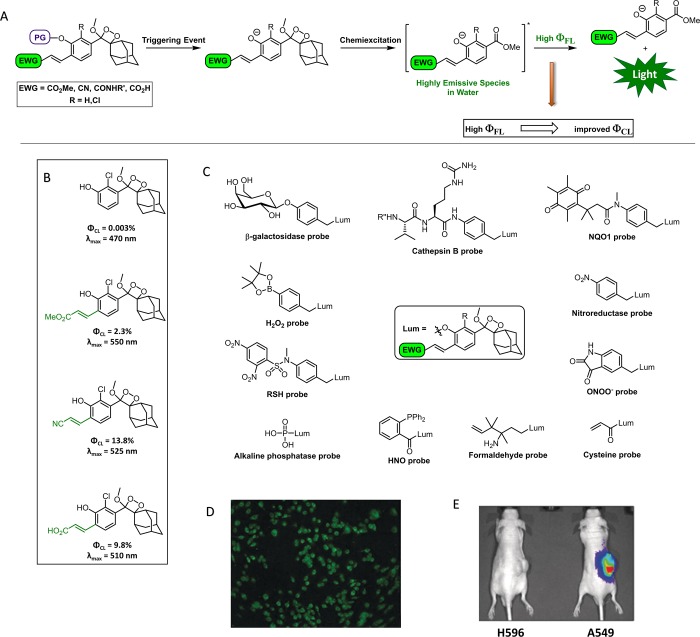Figure 3.
(A) High ΦFL of the excited phenoxy-benzoate is achieved by incorporation of an acryl group, which improves chemiluminescence efficiency. EWG, electron-withdrawing group. (B) Structure and properties of acryl-substituted phenoxy-dioxetane luminophores, which have high ΦCL under physiological conditions. (C) Structures of various chemiluminescent probes suitable for bioimaging (Lum = luminophore). (D) RAW 264.7 macrophages imaged using a chemiluminescent probe for cathepsin B. (E) In vivo images of tumor xenografts, formed by the injection of A549 cancer cells that overexpress NQO1 vs control cell line (H596), obtained with an NQO1-specific chemiluminescent probe.

